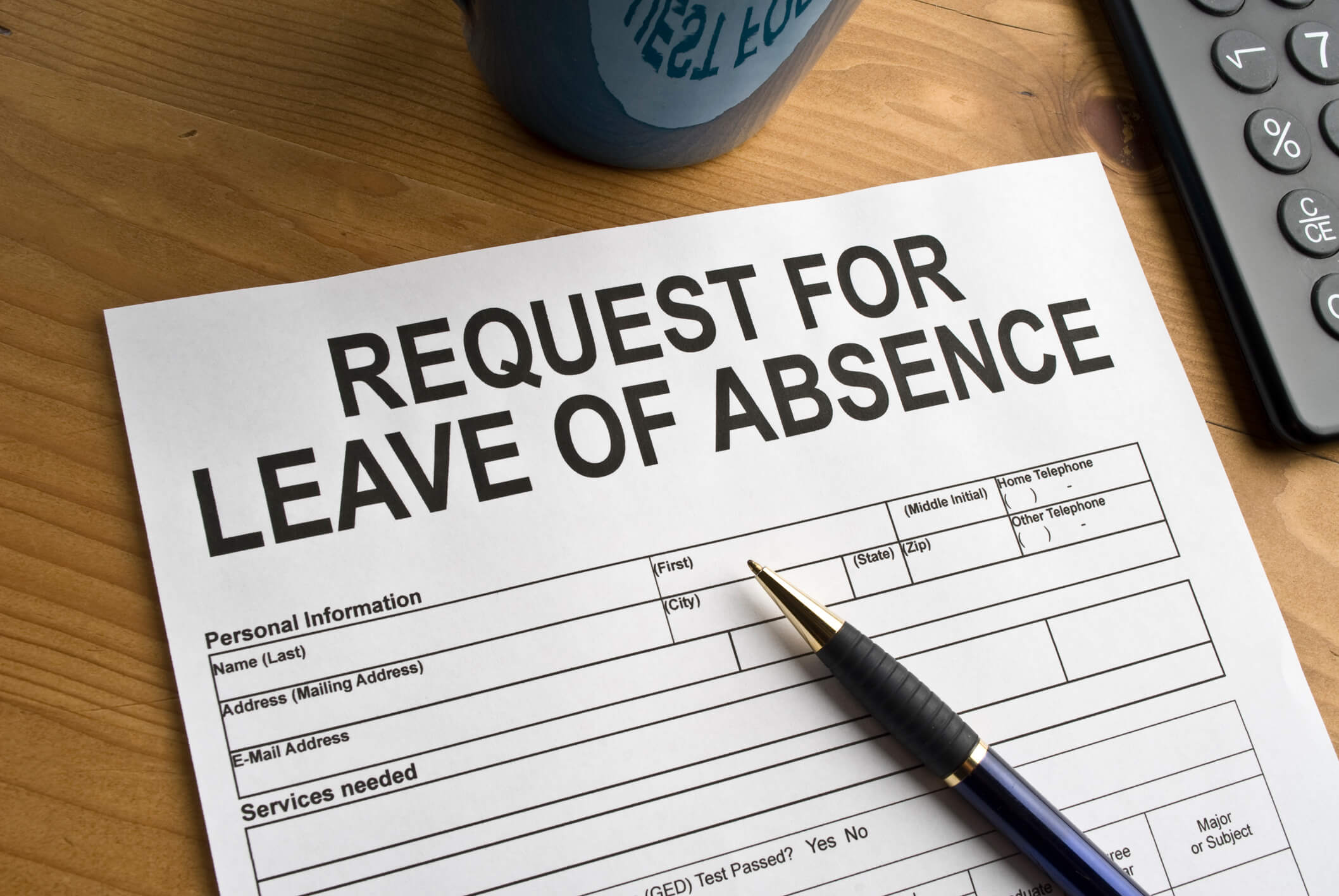In this installment of our Workplace Strategies Watercooler 2025 podcast series, Dee Anna Hays (shareholder, Tampa) and Lucas Asper (shareholder, Greenville), who are co-chairs of the firm’s Multistate Advice and Counseling Practice Group, join Todd Duffield (shareholder, Atlanta) to discuss the latest tips and trends for multistate handbooks. Dee Anna, Lucas, and Todd touch on various state and local law-specific issues and key topics for employers’ consideration, including revisiting diversity, equity, and inclusion (DEI), leaves of absence, and reasonable accommodation policies. They also stress the importance of understanding employee monitoring and privacy limitations and employee rights to engage in protected activity under the National Labor Relations Act, a protection that extends to all employees, including those not represented by a union.
Workplace Strategies Watercooler 2025: The Latest Tips and Trends for Multistate Handbooks

Transcript
Announcer: Welcome to the Ogletree Deakins podcast, where we provide listeners with brief discussions about important workplace legal issues. Our podcasts are for informational purposes only and should not be construed as legal advice. You can subscribe through your favorite podcast service. Please consider rating this podcast so we can get your feedback and improve our programs. Please enjoy the podcast.
Dee Anna Hays: Hello, and welcome to a live installment of our Multistate Monday podcast series. We are here in Las Vegas at Workplace Strategies 2025. If you haven’t listened to the Multistate Monday podcast before, we focus on areas of interest that we hope our clients and friends will find interesting who are operating in multiple jurisdictions across the country. I am Dee Anna Hays. I am a shareholder in the Tampa office, and I am the Co-Chair of Ogletree’s Multistate Advice and Counseling Practice Group. I am joined today by my Co-Chair of the Practice group, Lucas Asper, from our Greenville office, and our esteemed colleague, Todd Duffield, at our Atlanta office. And today we are going to give you a preview of our upcoming multistate presentation here at Workplace Strategies, Keeping the Upper Hand, the latest tips and trends for Multistate Handbooks. So we know handbooks continue to become more cumbersome for multistate employers to keep up to date.
The state and local laws are changing on a regular basis, and we thought it might be helpful to highlight some of the key topics that we’re going to consider in our presentation, and we hope that you might think about if you’re looking at your employee handbook and what might need to be updated. So first, there’s been a lot of attention when it comes to DEI and what employers might want to update when it comes to equal employment opportunity policies, potentially even discrimination harassment policies, diversity and inclusion policies. And I know that has been on the minds of many employers. Lucas, would you like to say a few words about what employers might want to think about in this regard?
Lucas Asper: Sure. So, the first thing that I always talk about with clients on this is to remember that, notwithstanding every executive order that has been issued and everything that we hear in the media, the law is still the law, and that’s our guiding drive when we develop these policies. Now, with that said, we also don’t want to put ourselves in the crosshairs unnecessarily for government scrutiny when we have a scenario right now where we know that employers are potentially going to be scrutinized if they have policies that are quote unquote illegal DEI or that support that type of concept. What that means is still pretty unclear. The one thing that I’ve been encouraging clients don’t rush to change the list of protected characteristics in your EEO policy, in your harassment policy because again, the law is the law. The Supreme Court cases on those various protected characteristics, statutory law on those various characteristics at both the federal, state and local level, none of that has changed.
And because of that, we still have an obligation to comply with the law, and that’s what we’re going to continue advising employers clients to do. Now, if we have policies that I’ll say are a little bit more on the fringe going beyond traditional EEO harassment. So, if we have true DEI policies, definitely put them under a microscope, make sure we don’t have anything in there suggesting that we have a preference system, suggesting that we adopt some sort of quota-based recruitment strategy that we are incentivizing folks to recruit diverse candidates specifically over non-diverse candidates. All of those things were just good old-fashioned discrimination. The law, again, it hasn’t changed. It’s a good time to dust off those policies and make sure we feel good about it, but by and large, I say stay the course.
Dee Anna Hays: Great points. And I recently had a question that came up with regard to a religious accommodation request that I thought was an interesting scenario to share where an employee said that because of their religious beliefs, that they did not want to sign off on a code of conduct that specifically referenced gender identity and gender expression. And just as you pointed out, Lucas, I think the focus there was what is the law, and what does the law say are protected categories. Some states specifically include gender identity and or gender expression in their Civil Rights Act, and even in states that don’t do that at the state level, like my home state of Florida, for example, there are many counties and some cities that protect gender identity. So, you just want to make sure that you’re aware of what those protections are at all of the levels where they apply.
And another interesting piece of that I thought was the idea of religious accommodations, right? So this is getting a lot of attention lately when it comes to DEI and it’s something that employers might start to see more of are religious accommodation requests based on certain types of training programs or policies. So it’s something that employers might want to think about doing is looking at their accommodation policies. I know many employers already have disability-based accommodation policies, but consider also having a separate category for religious accommodations and for pregnancy, childbirth, and related conditions so that it’s very clear that you offer all of those types of accommodations when they apply. Another key topic is immigration and the focus there. Lucas, what are your thoughts when it comes to what employers might want to consider with immigration policies in a handbook?
Lucas Asper: This is one of those that’s always been somewhat murky to begin with because the immigration policies that we see in handbooks, we were chatting about this, prepping for it and joking around because ironically, the policies relate to situations and people that are not the employees who are actually reading the policies most of the time. And so, it’s a little bit of a conundrum to even have these policies, but if we have them, I would say just make sure that we recognize, again, we are in an environment where we know that work authorization is being scrutinized extremely closely. Because of that, if we address this in the policy, make sure we are clear in that policy that we’re going to follow the legal requirements as it relates to work authorization, and we will not tolerate falsified documentation, counterfeit documentation, otherwise fraudulent documentation. Because if we do, here again, we’re putting ourselves unnecessarily in the crosshairs.
Dee Anna Hays: Absolutely. And it’ll be interesting to see, I think, how the EEOC starts to look at some of these issues. I know we’ve seen some statements from the EEOC already that really focus on anti-Americanism, and I think this religious accommodation piece related to DEI could be something that we see more of. So, I think those are good areas for employers to put on their checklists when they’re looking at policies. What about when it comes to AI? Do you think AI is worth mentioning in a handbook, Lucas?
Lucas Asper: This is another one of those that if a client, if an employer doesn’t currently have an AI policy, I question why do you want it? What are you trying to accomplish? Generally, what we’re trying to accomplish is protection of confidential information, that is the driving force of an AI policy. If we have addressed that issue sufficiently in our confidentiality policy, then we may not need something separate. If there is, if we’re in an industry or if we know that we have a heavy use of AI within our organization or within our industry, maybe we lean more towards having one just so that way everybody understands the way that those confidentiality requirements apply to the AI use. But in general, it’s very developing, by and large, in my opinion, at least, it’s protecting confidentiality more than anything else.
Dee Anna Hays: I think that’s a good point, and I think like you said, it comes down to culture as well. Is your company a heavy user of AI, or do you not want employees to use AI? And if you don’t, then certainly you might want to have a policy that says employees aren’t to do that for business purposes.
Lucas Asper: In a professional industry like ours, making sure employees know they can’t rely blindly on AI because you don’t have to Google or read too many articles until you find many professionals out there who have relied too heavily on AI and gotten themselves in a lot of hot water because of it. And I want to believe that all those are honest mistakes. Let’s avoid those honest mistakes. I’m giving some grace here.
Dee Anna Hays: Absolutely. And when it comes to technology, another area where I’ve seen an increase in questions are GPS monitoring and other types of monitoring. What are your thoughts about that?
Lucas Asper: The number one thing to be mindful of is there are a lot of states that are starting to address this, and so if you operate in multiple states, it’s making sure you are aware of the state-specific requirements that may exist for these types of policies. New York is a great example where in a New York handbook or New York addendum, I would expect to see an electronic monitoring policy very clearly explaining to employees the types of monitoring the employer does, as well as how we’re going to use that. So that way, there is no confusion about what we’re doing and whether there is an expectation of privacy.
Beyond those state-specific requirements, I do think it’s a good practice because in the end, employers are monitoring employees all the time, whether it’s internet usage, email usage, general network usage. That’s just talking about technology, but we know that essentially every employer monitors that in some way. Just put it out there, let employees know what you’re doing, make sure they understand they shouldn’t have an expectation of privacy, so that way we don’t get into a bad situation where they claim, you shouldn’t have known this, this shouldn’t have been disclosed to you or whatever.
Dee Anna Hays: Absolutely. Great points. And another thing to consider is if you are monitoring using video or audio surveillance, just be careful that you understand what the local laws are there. There are many states where you must have two-party consent for audio recording, so you would want employees to sign off on that before you just started making any recording of that type.
Lucas Asper: Talking about recordings is just too good of a segue to talk about the labor implications in these handbooks because, as you mentioned, recordings at the state level. Todd, this is obviously one of those policies that has been very much in the crosshairs for the past four years. What are you seeing in terms of handbook developments from a labor perspective?
Todd Duffield: Sure. As you both know, all employees, whether they’re represented or not, have certain rights under the National Labor Relations Act, to engage in certain kinds of protected activity. When a workplace rule interferes with those section seven rights, it becomes unlawful. So, for example, if you had a policy that said employees can’t organize or employees can’t discuss wages and compensation, that’s unlawful.
Lucas Asper: Under the Biden board, if you record those types of conversations of workplace disputes, you can’t prohibit that. That would be unlawful.
Todd Duffield: That’s exactly right. That’s exactly right. But what about facially neutral rules? So, you have a rule that says disrespectful or insubordinate conduct will result in discipline. It doesn’t specifically target union activity, but it could be read that way possibly, or a policy that says taking pictures or recording meetings in the workplace is prohibited. Again, it’s a neutral policy on its face. How does the board handle those kinds of rules? Well, there’s been, as we often see with the National Labor Relations Board, a little bit of a push and pull back and forth. So, during President Trump’s first administration, there was a decision that came out back in 2017. We refer to it as the Boeing case where the board established a balancing test, balancing the interest of employees to engage in those section seven activities versus the employer’s legitimate business interests in prohibiting certain kinds of activities.
So, essentially, what the board looked at under the Boeing test was whether or not the workplace rule would, in fact, interfere with those section seven rights. And if the employer couldn’t come forward with a strong enough legitimate business interest, then the board would deem that policy unlawful. In 2023, under the Biden board, a new decision was issued. We refer to that as the Stericycle decision, and there a presumption was established that any rule that could interfere or could be read to interfere with an employee’s section seven rights, then it was presumptively unlawful, and then the burden shifted to the employer to defend its legitimate business reason, but it was a very, very high standard.
That is still the law, that Stericycle decision, and it’ll continue to be the law until we have a full complement of the board and a case percolates its way up to that board and they change it. We fully expect that that will happen at some point. But as we sit here today, there are only two members on the board, so they can’t make any new decisions. In our presentation, we’re going to delve into, I think a little bit more of some of these policies, which ones to pay attention to. We’re going to compare and contrast some under both of these standards. So, you’ll see where one policy, if the Stericycle standards applied, it would be deemed unlawful, but that exact same policy under the Boeing standard would be lawful.
Lucas Asper: What about if you have a good disclaimer in your handbook that says, hey employees, nothing in this handbook or any of these policies is designed or intended to interfere with any of those rights that you just described. Is that going to be a get out of jail free card for a company?
Todd Duffield: Not necessarily. Yeah, it’s good to have those disclaimers in there if you’re going to have them, you probably want to have multiple versions of it and you want to make sure it’s in close proximity to these kinds of policies, not just one at the very beginning of the handbook.
Lucas Asper: How far back, and I know I am speculating, and I’m asking you to speculate a little bit, but you mentioned there’s the push and the poll. Has there been any indication of what we should expect or what we may be able to expect from the current Trump administration as it relates to, do you anticipate a return to the Boeing standard?
Todd Duffield: I think so. Yeah. I do expect that a Republican majority board would return to the Boeing standard. It’s very employer friendly, it’s cut and dry. It established three separate categories for rules, some that are clearly lawful, some that there needs to be some analysis and some that are clearly unlawful. So, it provides a lot of guidance for employers.
Lucas Asper: Realistically, when can we expect a quorum on the board that could lead to what you just described?
Todd Duffield: Yeah, I wish I knew. I wish I knew. So, the process is the president has to nominate someone, then they have to be confirmed. There are two vacancies currently, well three with when Wilcox sitting on the sidelines for a moment while the court decides whether or not her termination was lawful or not. So, once they get confirmed and get on the board, you have to get a case that’s got to make it through the region, and then exceptions are filed, it gets before the board, they then get to rule on it, so it could take a year or two. So, until then, Stericycle is still the standard, but it’ll be interesting to see how heavily the regions are looking for those kinds of cases. So, I think Dee Anna, you and I talked a little bit beforehand about how might the board come to see your employee handbook and start reviewing these policies.
Dee Anna Hays: Right, I’ve had clients ask that question, particularly when they don’t have a unionized workforce. So how might that happen, Todd?
Todd Duffield: So, it can happen a couple of ways. The most common way is an employee or a union files an unfair labor practice charge with the board, and they either cite one of these policies as unlawful or it could be for something totally different. But in the course of investigating that charge, the board agent will request a copy of your handbook. I typically only provide the specific provision or the policy that they’re questioning, not the entire handbook, but some employers have turned over their entire handbook. And, of course, that’s like Christmas morning for these board agents who then go through every single word of that handbook and find other policies that they don’t like either, and then they expand the charge.
Another way that it could find its way, your handbook could find its way to the board is there are often these inter-agency cooperation agreements, these MOUs between the NLRB and the EEOC or the NLRB and the DOL. And so, if the DOL or the EEOC are conducting an investigation or an audit, and they have your handbook and they see a policy that is unlawful under the NLRA, under these sharing agreements, they can share that information with the board. So, that’d be another way it can get there. I suspect that kind of inter-agency cooperation is probably going to die down a little bit. It hit its heyday during the Biden administration, but I don’t know that it’ll continue as strong during Trump.
Lucas Asper: I hope everyone listening is picking up on what we’ve all been dealing with for the past number of years at this point, which is when we review handbooks, we are as focused if not more focused on these labor issues than we are on the traditional employment issues in an employee handbook because that’s where the rubber has met the road from a legal perspective most consistently. Now, I’m going to try my hardest to segue into our last topic from this because the other maybe most critical development and thing that we focus on most heavily is leave and paid sick leave and paid family leave. So, Dee Anna, what trends are we seeing in those spaces?
Dee Anna Hays: So, great question. I would say for employers that are in multiple jurisdictions, it’s getting harder and harder to have one PTO policy that’s going to work in every state. So, we’re starting to see iterations where employers might go to a regional approach. So, where you have a paid sick leave policy or a PTO policy that is going to be compliant in the majority of jurisdictions. And then if you have California or some of the very employee friendly jurisdictions that you want to separate further, you could do that. And that seems to be a manageable approach that a lot of employers are considering. I think in the beginning it was let’s try to make one size fit all, and that did not work. And then it was, let’s have 14 different paid sick leave policies, and that can be difficult administratively for human resources to make sure that they’re tracking and treating everyone consistently. So, I’ve seen a lot of clients go to that regional-type approach.
Lucas Asper: Yeah, I can tell you, got on a call with a client who asked me almost that question, can there be a one-size-fits-all? And my answer was very close to what you just said, which is, look, we can do it.
Dee Anna Hays: You want to be very generous.
Lucas Asper: You’re going to be ridiculously generous if that’s the way you want to do it. If you don’t want to be overly and really unnecessarily generous or just have an unlimited policy, then it takes putting those puzzle pieces together.
Dee Anna Hays: Absolutely, and I’d say one other trend I’ve seen is toward a front-loading rather than accrual-based policies. Because generally if you give employees what they’re entitled to at the very beginning, then you’re going to be compliant, rather than the various modes that you have to track accrual under different state and local laws.
Lucas Asper: And that helps us with carryover, that helps us with accrual issues. I’ve seen that trend as well. It’s funny how it’s cyclical. I feel like in the past there were two buckets and then there was this trend to move to one bucket, and now there’s a trend to move back to two buckets again, coupled with a trend to front-load instead of a crew paid sick leave. And that’s likely going to fade into something else in the near future, depending on how the law develops.
Dee Anna Hays: Keeps us all on our toes.
Lucas Asper: That’s right.
Dee Anna Hays: Well, thank you everyone for joining us today. And if you thought this was interesting, please check out our Multistate Monday episodes, future and past, and thank you.
Announcer: Thank you for joining us on the Ogletree Deakins podcast. You can subscribe to our podcast on Apple Podcasts or through your favorite podcast service. Please consider rating and reviewing so that we may continue to provide the content that covers your needs. And remember, the information in this podcast is for informational purposes only and is not to be construed as legal advice.

Diversity, Equity, and Inclusion Compliance
Our attorneys are ready to assist with the full spectrum of workplace DEI-related issues. The members of Ogletree Deakins’ Diversity, Equity, and Inclusion Compliance Practice Group have extensive and unique experience assisting employers.

Leaves of Absence/Reasonable Accommodation
Managing leaves and reasonably accommodating employees can be complex, frustrating, and expose employers to legal peril. Employers must navigate a bewildering array of state and federal statutes, with seemingly contradictory mandates.

Traditional Labor Relations
The attorneys in Ogletree Deakins’ Traditional Labor Practice Group have vast experience in complex and sophisticated traditional labor law matters. This includes experience advising and representing employers of all sizes and across virtually all industries in connection with union representation campaigns, collective bargaining negotiations, strike preparations, labor arbitrations, and National Labor Relations Board proceedings.





